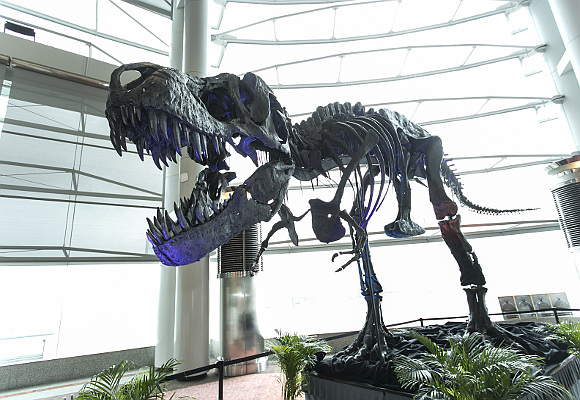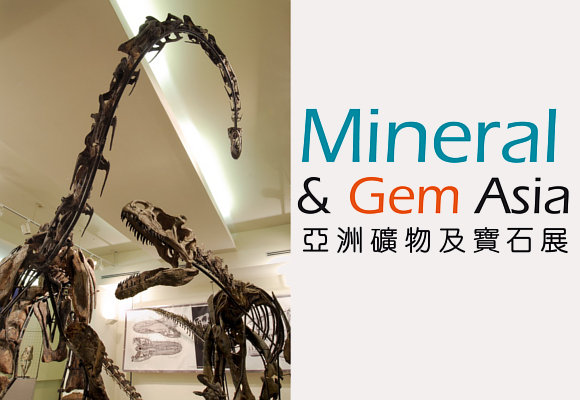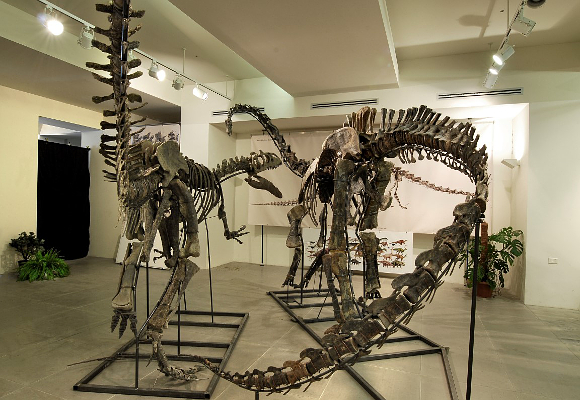Dinosaur Fossils on Display at Mineral & Gem Asia 2015
Participants include exhibitors from Australia, Brazil, Canada, Mainland China, France, Germany, Hong Kong region, India, Italy, Morocco, Myanmar, Pakistan, Peru, Poland, Spain, Sri Lanka and the United States.

Mineral & Gem Asia’s first edition will be held from 27 to 30 June 2015 at the AsiaWorld-Expo, Hong Kong. Organised by UBM Asia, the fair will gather around 100 local and overseas exhibitors in about 12,000sqm of exhibition space. Participants include exhibitors from Australia, Brazil, Canada, Mainland China, France, Germany, Hong Kong region, India, Italy, Morocco, Myanmar, Pakistan, Peru, Poland, Spain, Sri Lanka and the United States. Showcases will include a variety of rough and polished gemstones, fossils, decorative and ancient stones, art pieces and rough, loose, semi- and fully finished mineral products.
Apart from the dazzling display of rare mineral specimens, three dinosaur fossils await to awe visitors. The dinosaur fossils include a pair of dinosaur fossils in fighting position – Allosaurus atrox & Suuwassea emiliea – which will be displayed for the first time in Asia. Tyrannosaurus Rex — King Kong, which was displayed at the June Hong Kong Jewellery & Gem Fair 2014, will be displayed at Mineral & Gem Asia as well. In addition, a three-dimensional model of the Thermopolis Archaeopteryx specimen, the first of its kind, will also be displayed.
«The launch of Mineral & Gem Asia is an important milestone in UBM Asia’s fair history. We are glad that the fair is receiving great support from the industry,» said UBM Asia Senior Vice President Wolfram Diener. «Not only will it showcase rare mineral specimens, the fair will also display invaluable dinosaur fossils.»

The Allosaurus is a genus of large theropod dinosaur that lived 155 to 150 million years ago during the late Jurassic period. Allosaurus was a large bipedal predator. Its skull was large and equipped with dozens of large, sharp teeth. Relative to the large and powerful hind limbs, its three-fingered forelimbs were small, and the body was balanced by a long and heavily muscled tail.
Meanwhile, the Suuwassea is a genus of diplodocoid sauropod dinosaur found in the Upper Jurassic strata of the Morrison Formation, located in southern Carbon County, Montana, USA. Suuwassea is a basal diplodocoid, characterised by skull and axial skeleton features it shares with Diplodocidae and Dicraeosauridae though it is too primitive to pertain to any of the latter clades.(Source: Wikipedia.com)
Allosaurus atrox and Suuwassea emilieae will be displayed in a fighting position. It is the first time for such a dramatic scene to be displayed in Asia and Mineral & Gem Asia is honoured to host such a landmark exhibition.

Tyrannosaurus Rex — King Kong, was found in the Hell Creek Formation in the Badlands of Montana. The cretaceous levels are from Maastrichtian ages, are aged between 65 and 70 million years and were formed in a delta environment under hot and humid climate conditions. Approximately 65% of the skeleton of this Tyrannosaurus Rex has been preserved and thus this specimen is considered as one of the most complete ever found. The missing bones were made out of resin moulds to complete the skeleton. This specimen owes its nickname «King Kong» to its black bone colour. As such, King Kong is not a composite specimen, like most of the mounted and exposed Tyrannosaurus Rex skeletons.
Archaeopteryx is a genus of bird-like dinosaurs that is transitional between feather-carrying dinosaurs and modern birds. The name derives from the ancient Greek, meaning «ancient» and «feather» or «wing.» Archaeopteryx, which lived 150 million years ago, was found in the Jurassic limestone beds near the German town of Solnhofen. A total of 12 fossils in various stages of preservation have been unearthed. The feathers are of an advanced form (flight feathers); the fossils are evidence that the evolution of feathers began before the Late Jurassic.
UBM Asia, organiser of the most professional international jewellery fairs globally, offers opportunities to the world’s jewellery trade. UBM Asia’s jewellery fairs attract over 100,000 trade buyers and over 10,000 exhibitors from around the world. The September Hong Kong Jewellery & Gem Fair, with over 3,630 exhibitors and over 52,000 visitors, is the world’s number one fine jewellery event. The June Fair is Asia’s biggest mid-year international jewellery fair.
